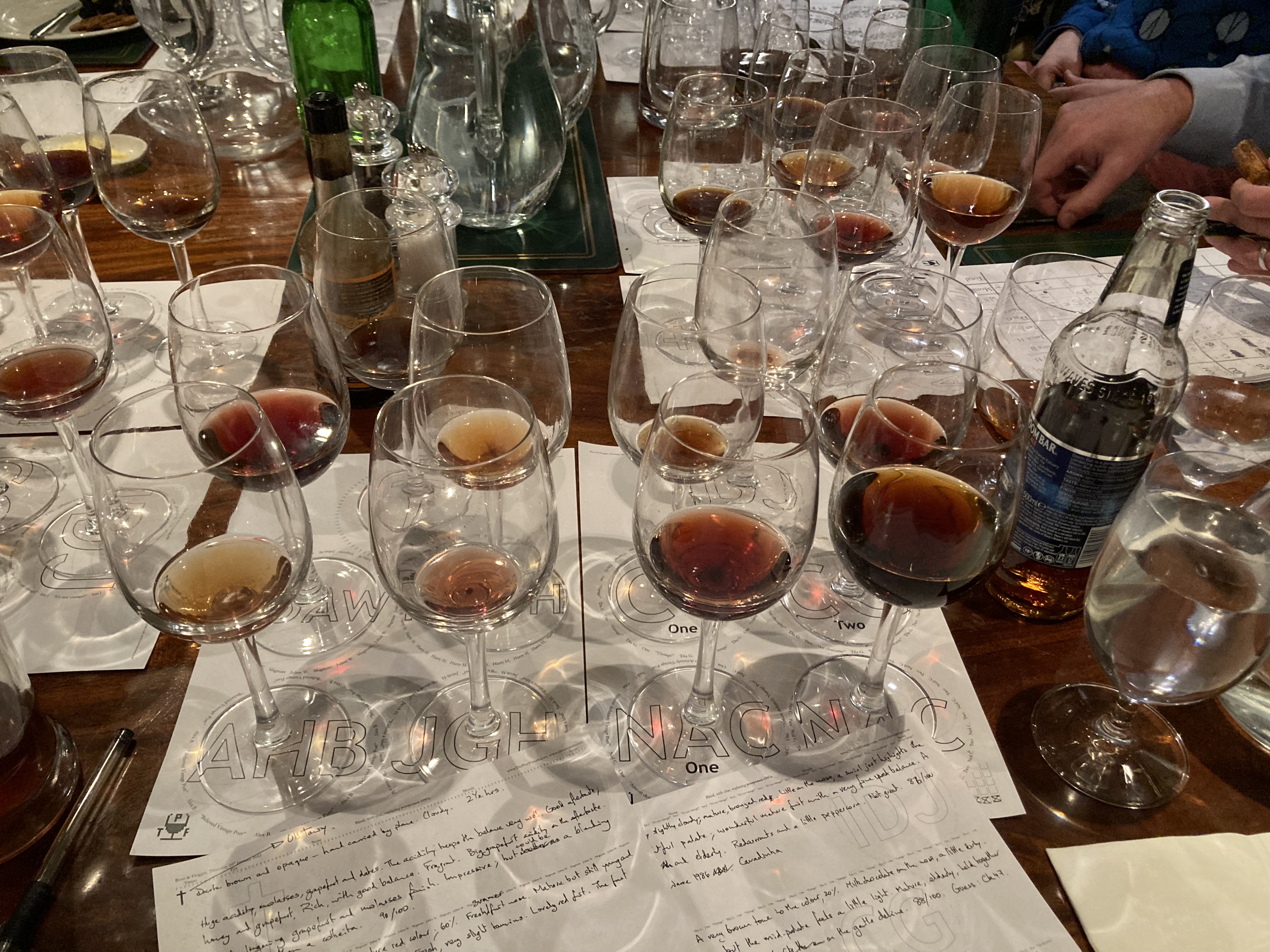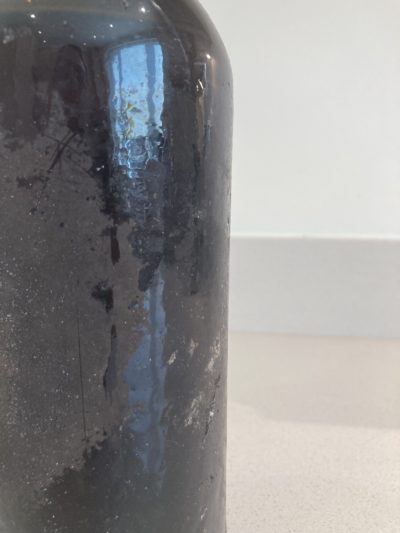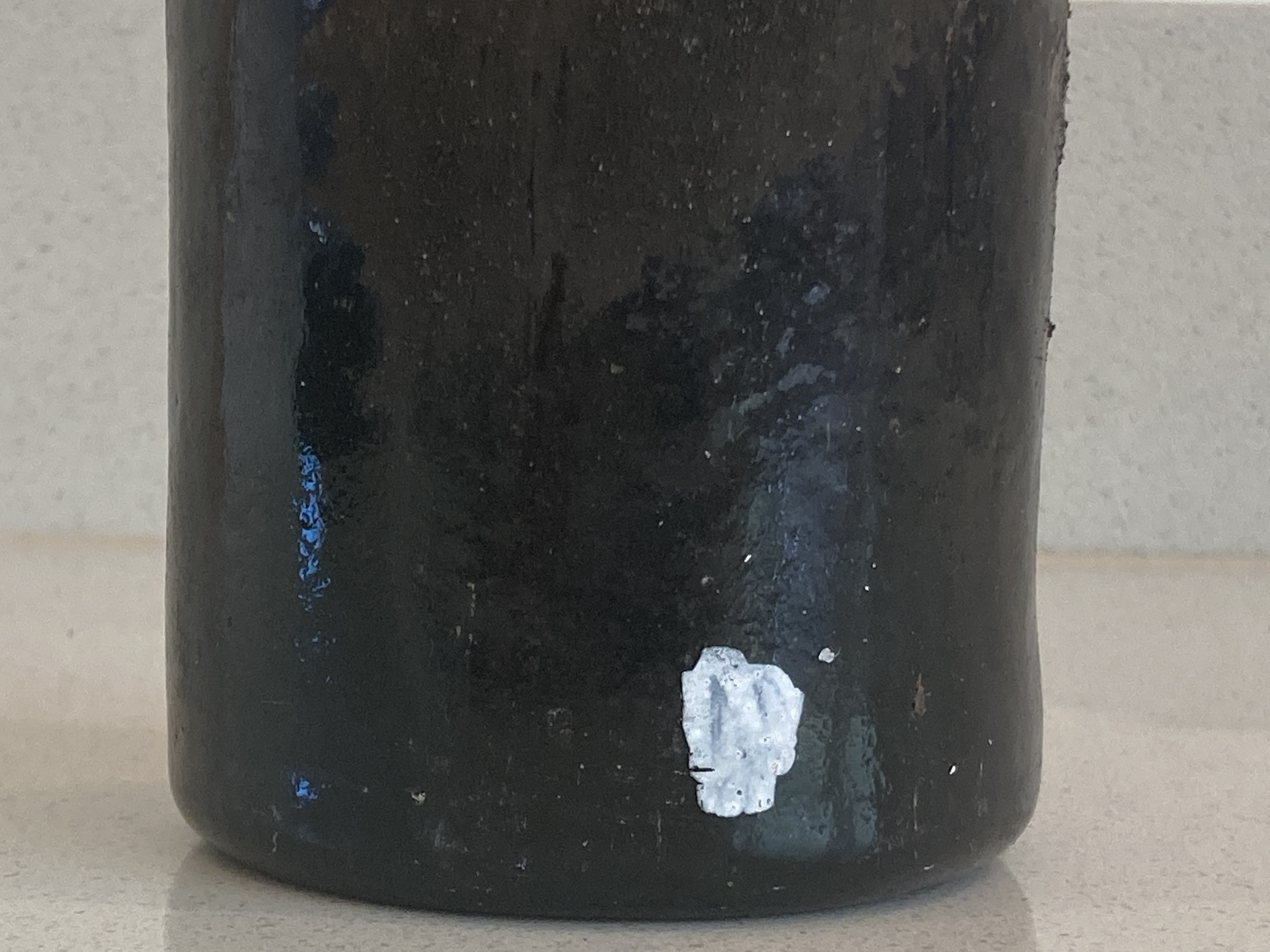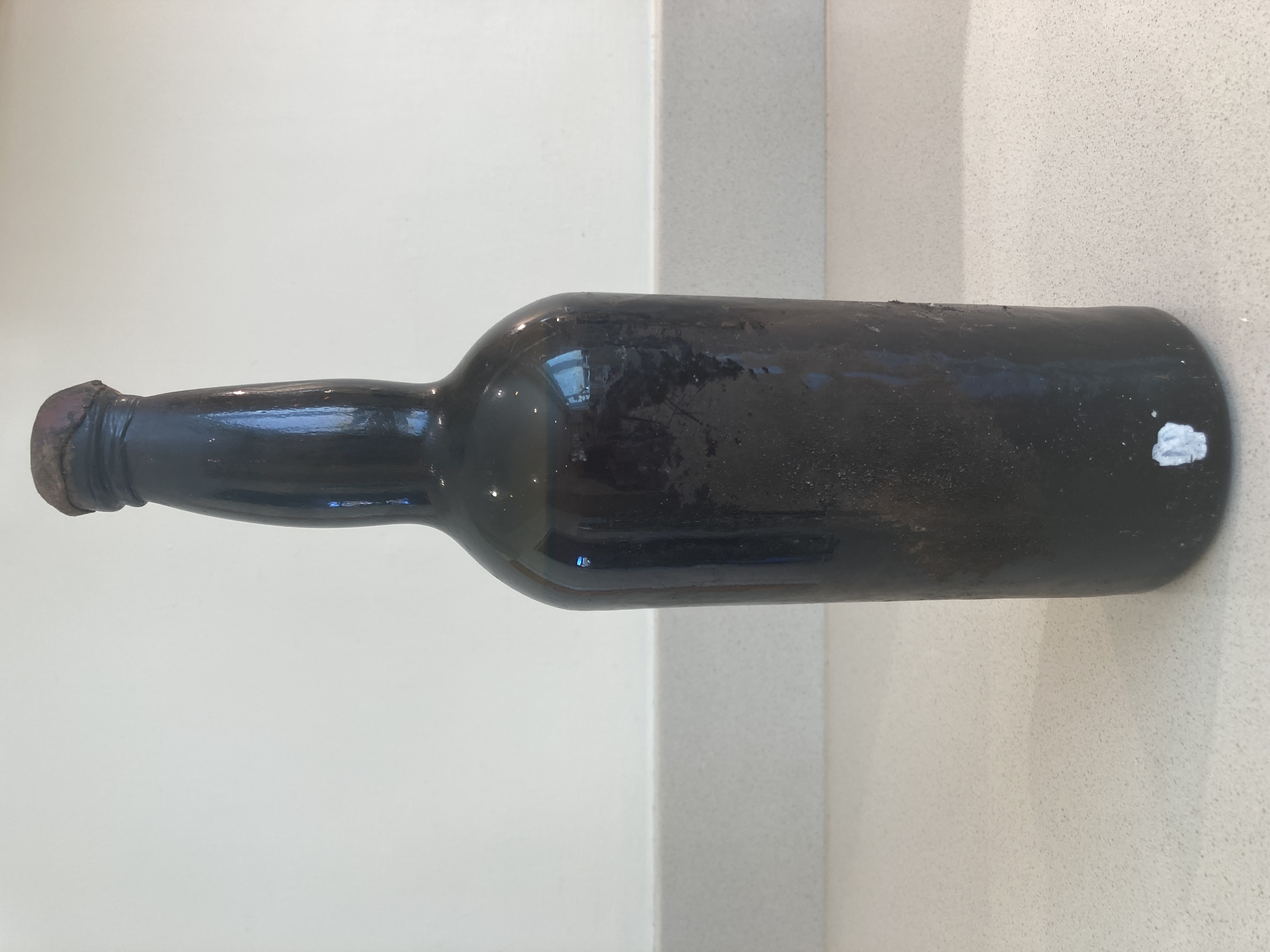
I am lucky enough to be a member of an active Port Club in the UK. We base ourselves around a website (www.theportforum.com) and use the forum to chat about Port and arrange to meet for dinner and to share a bottle or two of our favorite wine. Most members are UK-based, but we also have members in Ireland, Portugal, Scandinavia, the UAE, the US and Canada. We meet on average 1-2 times per month, sometimes for a structured tasting – for example, we recently had a tasting of around 20 Vintage Ports from 1994 – and sometimes for a “bring a bottle” tasting.
One of my favorite tastings is our annual Christmas tasting, which usually takes place in the third week of December. The theme has been the same for the last 15 years, “The Unknown Shipper and His Peculiar Friends”. We use this as the chance to open bottles that have lost their identity: no label, no stamp on the capsule, no crest on the bottle, etc. You can see an example of the sort of bottle we will open in the pictures. Sometimes the wine inside the bottle is magnificent, sometimes undrinkable. Fortunately, the successes are far more frequent than the failures – Port is such a wonderfully robust wine!

My bottle for the last tasting was a delightful old bottle, with a dimpled surface, bubbles in the glass, a neck that was a different shape on one side compared to the other, and an uneven base which caused the bottle to wobble when stood upright. From experience, my guess was that the bottle dated from the period of roughly 1850-1900. Of course, the bottle could have been reused but there was a good chance that the wine in the bottle was from this period. The only possible chance of identifying the wine would be from the cork – and then only if the cork was branded. From the bottles we’ve opened in the past we have come to the conclusion that cork branding was a practice that only started to become uniformly practiced around 1900.
The provenance of the bottle was excellent. The bottle had been sold by the Duke of Northumberland and had been cellared in the depths of Alnwick Castle. On the downside, the fill was low shoulder and the color was quite light, but with no signs of leakage, I was hopeful the contents might deliver a good experience.

The bottle was opened by pushing the cork into the bottle to ensure it could be bagged out intact, just in case it was branded. Because of the probably age of the wine, it was opened, decanted and poured straight away.

Despite the short time between opening and tasting, the wine was gone. Opinions ranged from “undrinkable” to “barely drinkable”. The wine was oxidised and very dry. There was a suggestion that it could have been made at the time when Port was fermented dry or nearly before being fortified – as promoted and encouraged by Baron Forrester. There did appear to be remarkably little sugar in the wine so this could be entirely possible. The wine was not a successful drink but did seem to be extremely old – perhaps even coming from the first half of the 19th century.

Happily, there were other bottles at the last Christmas tasting to keep everyone content. The general consensus that night for the best three wines of the evening was Graham 1920, Taylor 1920 and Graham 1955.
Best regards,
Alex


